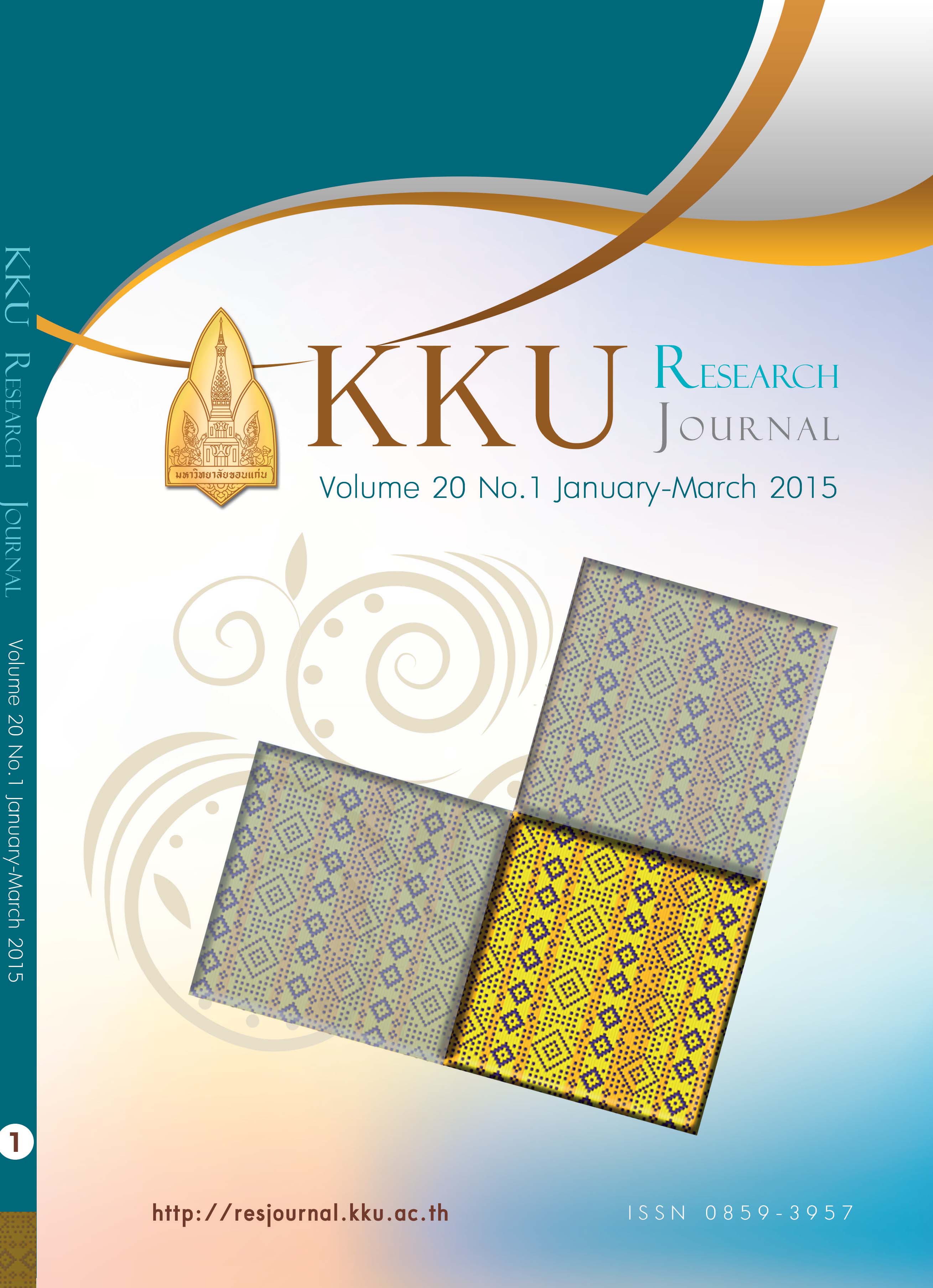Effect of friction welding on tensile strength of Polymethyl Methacrylate (PMMA) by computerized numerical control machine
Main Article Content
Abstract
The objective of this research is to investigate the effect of joining parameters from friction welding process of polymethyl methacrylate on the mechanical properties. Friction welding used lathe computer numerical control machine of applied for welding. Friction welding used different rotation speed such as 600, 1000, 1400, and 1800 rpm; burn of length was 2.2 and 3.2 mm and welding time is constant at 30 seconds. From the investigation, the rotation speed and burn of length parameter influence mechanical properties. The lower rotation speed provides the higher tensile strength. The results showed that the condition with rotation speed at 600 rpm, burn of length at 3.2 mm, and welding time at 30 seconds provides the maximum average tensile strength of 18.11 MPa. In addition, the faster rotation speed causes the lower tensile strength. On the other hand, an increase of burn of length led to higher tensile strength.
Article Details
References
[2] Saeid Hoseinpour Dashatan, Taher Azdast, Samrand Rash Mhmadi, Arvin Bagheri. Friction stir spot welding of dissimilar polymethyl methacrylate and acrylonitrile butadiene styrene sheets. Materials and Design. 2013; 45: 135-141.
[3] Samareh Mohammad zadeh Polami, Rudolf Reinhardt, Michael Rethmeier, Alois Schmid. Joint-site structure friction welding method as a tool for drive pinion light weighting in heavy-duty trucks. Journal of Materials Processing Technology. 2014; 214: 1921-1927.
[4] Ahmad M.N, Uday M.B, Zuhailawati H, Ismail A.B. Microstructure and mechanical properties of alumina-6061 aluminum alloy joined by friction welding. Materials and Design. 2010; 31: 670–676.
[5] Selvamani S.T, Palanikumar K. Optimizing the friction welding parameters to attain maximum tensile strength in AISI 1035 grade carbon steel rods. Measurement. 2014; 53: 10-21.
[6] Avinash M, Chaitanya G.V.K, Dhananjay K.G, Sarala Upadhya, Muralidhara B.K. Microstructure and Mechanical Behavior of Rotary Friction Welded Titanium Alloys. Engineering and Technology. 2007; 11: 146-148.
[7] Sandeep Kumar, Rajesh Kumar, Yogesh Kumar Singla. To Study the Mechanical Behavior of Friction Welding of aluminum alloy and Mild Steel. International Journal of Mechanical Engineering and Robotics Research. 2012; 1(3): 43-50.
[8] Kulyuth Boonseng, Suppachai Chainarong, Chaiyoot Meengam. Microstructure and Hardness of Friction Welded SSM 356 Aluminium Alloy, Advanced Materials Research. 2014; 887-888: 1273-1279.
[9] Qasim H. Shah, Kassim A. Abdullah. Evaluation of friction welded bi-material joint strength subjected to impact loads. Advanced Materials Research. 2011; 264-265: 719-725.
[10] Yahya Bozkurt. The optimization of friction stir welding process parameters to achieve maximum tensile strength in polyethylene sheets. Materials and Design. 2012; 35: 440-445.
[11] Lin C.B, Li-Cheng, Yi-Chun Chou. Effect of solvent and cosolvent on friction welding properties between part of PMMA with PVC. Journal of Materials Science. 2013; 33 (12): 2563-2570.


